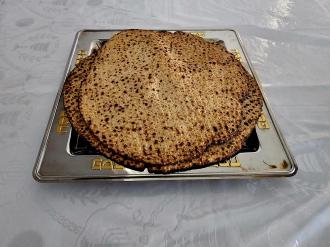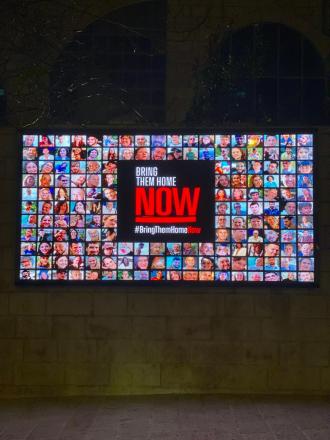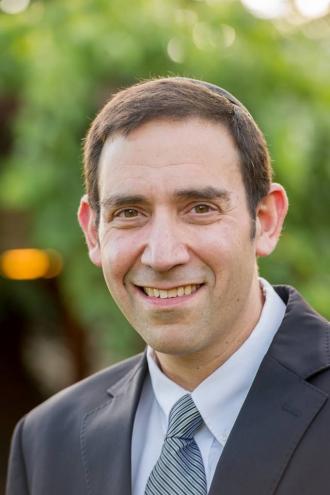Sefer Bereishis is the story of great individuals who form the foundation of Klal Yisroel. The middos that we have were implanted within us by the Ovos. We get our chessed and our mesiras nefesh from Avrohom. We get middas hagevuroh from Yitzchok. We get our midas ha’emes and tifferes from Yaakov. We mentioned in Parshas Vayeitzei that when Yaakov put stones around his head which became one when he awoke, it had deep symbolic significance.
Yaakov had a mesorah that Klal Yisroel would begin with 12 shevotim, each epitomizing a separate derech for avodas Hashem. And the one who would have 12 sons would be zoche to be the founding Av of Klal Yisroel. There are different shitos about how many stones Yaakov took. One shitta says he took two stones. One represented Avrohom who had Yishmoel and was not zoche to found Klal Yisroel. He took a second stone which represented Yitzchok who had Eisov and similarly wasn’t zoche. Yaakov said: if when I wake up in the morning I will find these two stones merged into one, it will be a sign that I will be zoche to be ma’amad Klal Yisroel. Another shittah includes a third stone for Yaakov to merge together. Another shitta says he put 12 stones to represent the 12 shevotim.
All these shittos are getting at one point. Yaakov took all the characteristics of the Ovos and built Klal Yisroel from that blending.
In the end, Yaakov Ovinu gives the brochos to the twelve shvotim where he identifies each one’s unique kochos hanefesh--but all together form the heritage of all Klal Yisroel. Because after he blessed them all, every shevet took from Yaakov a dimension of every middoh.
There is a famous question, why do we look up to Avrohom Ovinu’s ordeal at the Akeidoh as something remarkable and unique? After all, he didn’t actually slaughter Yitzchok, but we know in our history, many parents actually sacrificed their children so they wouldn’t be handed over to avodo zoro. The answer is that those parents received the kochos hanefesh to go through with such a supreme sacrifice from Avrohom Ovinu at the Akeidoh.
So Sefer Bereishis is the story of individuals who endowed Klal Yisroel with their unique gifts and characteristics.
Now we move to tell the story of the nation.
First Yosef dies after 71 years of ruling Egypt. Eventually all 70 people who came down to Egypt from Cana’an—with the exception of Yocheved and Serach bas Asher-- pass on, and a new generation arose. There was a population explosion. But not only did Klal Yisroel increase in size, they also became more integrated into the general Egyptian society.
When you are a small, close knit tribe, then it is easy to put up social barriers, maintain a unique identity, and remain distinct from the general population. But as the tribe grows into a nation, it is harder to maintain conformity and people start to explore other cultures and experiment.
Klal Yisroel often found themselves in situations historically where they didn’t want to remain separate and culturally unique. It is interesting to compare the development of Moslem immigrants into European society with their Jewish counterparts coming to the United States. Moslems seem to have an easier time maintaining their distinct culture and values within Europe than the Jews did in America. The Jews assimilated much faster and more thoroughly.
A person, as he stops and thinks seriously who he is and what it means to be a Jew, needs to realize that Hashem’s choosing us out of all of creation to represent Him in this world and live an elevated life, isn’t something incidental to his life. It has to be one’s source of pride and core identity. We shouldn’t feel lacking in our yiddishkeit and have a need to look elsewhere for fulfillment. We shouldn’t serve the emes with a sheker.
This was Yaakov original plan—to have Klal Yisroel settle in a separate ghetto—the land of Goshen—where they would be isolated from, and unaffected by, the decadent Egyptian culture outside Goshen. This was his vision- and with this plan of isolation, Klal Yisroel are secure and safe from persecution. But when Klal Yisroel moved out of Goshen and spread all around Egypt, then the shibbud started. Once they were no longer isolated, they were no longer secure.
Parshas Shemos starts with Pharaoh’s fear of Klal Yisroel’s potential uprising and decides to take pre-emptive measures to subjugate them. One could have interpreted this as a typical Anti-Semitic impulse having no deeper metaphysical causes. But Chazal saw things differently. They know that no trouble or tragedy occurs to Klal Yisroel unless there is a spiritual failure which precipitated it. It is Hashem responding to our failure by sending us messages.
The midrash tells us that when Klal Yisroel declared that they wanted to be just like the Egyptians and stopped doing bris miloh, the affection that the Egyptians had for them turned into deep resentment and hatred. As long as they were longer isolated and distinct, they were secure. But once they began to observe and admire the sophistical Egyptian culture with all their technological advances they wanted to become part of that decadent society. Klal Yisroel were enamored by it. But there was something that physically separated them from the Egyptians—bris miloh—and it had to be done away with.
There is a machlokes between the Netziv and the Beis Halevy if this was an outright abandoning of bris miloh, or if they continued performing the bris but then subsequently covered it up with plastic surgery. These two approaches reflect two types of assimilation.
One type of assimilation is just a straight dropping of yiddishkeit with no pretenses. The other is more subtle. One feels bound to keep mitzvos but deep down he would rather live the life of a non-Jew -- without all the rules and restrictions. So he ingenuously finds ways to work around all the rules of yiddishkeit in order to essentially live a non-Jew lifestyle without dropping any mitzvos.
But whichever way one assimilates, the result is the same. And Hashem orchestrates Jewish history to respond in kind.
Right now, Jews are jumping for joy. Why? Because on Friday, Donald Trump will be inaugurated as the president of the United States, and all his top advisors and aides which are his relatives, are Jewish. Some frum, some not so much. But all his grandchildren call him “zeidy”. Everyone is planning and hoping for a bright future with the Trump Administration. We don’t know why Hashem created this absurd situation, allowing such an unusual individual to pull the biggest upset in American politics and break every conventional rule in statesmanship imaginable. But what happens to Klal Yisroel here and in America will be a function of Hashem’s infinite cheshbon weighing up our commitment to Torah and Mitzvos on the one hand, and the depth of our assimilation into the American scene on the other.
The Megilloh says that when Esther became the queen, Mordechai instructed her never to reveal her Jewish identity to the public. Keeping this secret is what allowed Hommon to be caught off guard when Esther confronted him with his attempted genocide of her own people at the party she threw for him and Achashveirosh. But Mordechai didn’t know all that at the time. What was his motivation for telling Esther to keep her identity hidden? Chazal explain that Mordechai didn’t want Klal Yisroel to rely on having “one of their own” in the palace of the emperor if any trouble would threaten them. He wanted the Jews to turn only to Hashem and rely on their teshuvoh and ma’asim tovim to help them get out of trouble. He didn’t want them to be complacent.
The Rambam writes in his hakdomo to Mishna Torah in his short list of mitzvos that the main point of the Purim story is to illustrate the power of teffiloh to turn the tide of events and save Klal Yisroel from annihilation. If Klal Yisroel thought they had Queen Esther to rely on to get rid of Hommon’s decree for them, they never would have been saved. Had Mordechai told her to reveal her identity, they never would have been saved. And Esther complied. The megilloh reiterates that she subordinated herself to Mordechai’s instructions. Only after that second seudoh was it revealed that her keeping that secret until the right moment came along was what ensured Klal Yisroel’s survival.
Jewish history is run by Hashem according to His plan, weighing our Torah and mitzvos. It is a fundamental principle.
We live in a world where people aren’t as idealistic as they used to be. People don’t live by their ideals. They make all the compromises necessary to get ahead and follow their ambitions. People are very practical and pragmatic today. The idea that a person is in this world primarily to build up his neshomo, develop himself into a Torah personality, and connect to Hashem, is not a popular idea. This is why we find ourselves always having to justify to other people why there are so many yeshivas and why so many people are learning.
The gemara in Sanhedrin asks what the definition of an apikores is. One answer given is that it’s when someone asks “what practical benefit is there by people sitting and learning?” That means, someone who doesn’t understand the value of tens of thousands of people sitting and learning, harbors heretical beliefs. Why? Because his sense of values and priorities in life are seriously skewed. They don’t appreciate the fact that people who are building up their neshomo and getting closer to Hashem are having the biggest positive impact on Jewish history and ultimately, world history. It is something we have to appreciate better ourselves.
Even though many people think the future of Israel and its security is now safely in the hands of Jared Kushner and Ivanka Trump and they feel they can relax, it is irrelevant. These individuals may have had the zechus to be chosen as Hashem’s shelichim for a yeshuoh, but we don’t know. What we do know is that to the degree that each Jew works on his neshomo to build himself up and connect to Hashem to the highest degree through limud haTorah, the better off Klal Yisroel will be on every level.
When Chazal look at any event in history, it is always attributed to Klal Yisroel’s mitzvos or aveiros. The gemara in Megillah asks what Klal Yisroel did to precipitate the fearsome gezeiroh against them. But the gemara refers to us as “soneihem shel Yisroel”. It is not just a euphemism. It is an insight; that when Klal Yisroel fails in its spiritual mission, we become our own worst enemy—we cause our own calamities. And when we act properly, we become their greatest ally and asset for achieving security and prosperity.

















